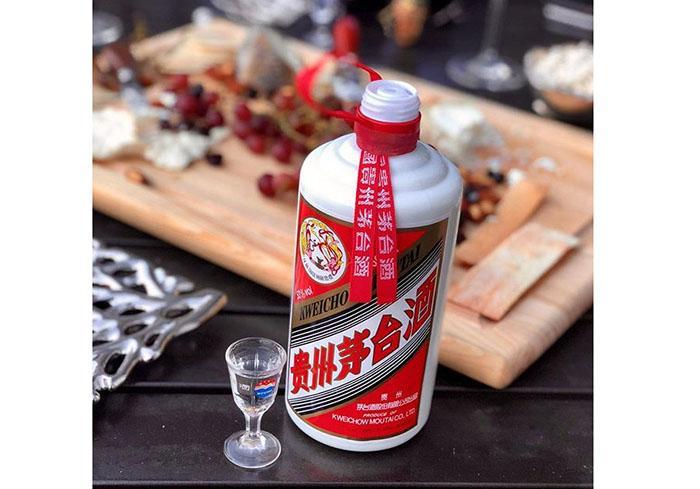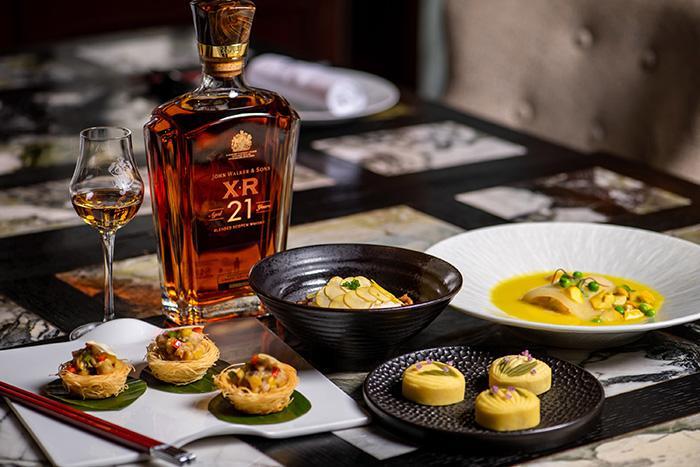Whether you’re a seasoned connoisseur looking to expand your liquor palate or simply curious about foreign spirits, Chinese liquor might be an unexplored territory.
Did you know Baijiu, a traditional Chinese spirit, is the most consumed liquor in the world?
You Are Watching: Popular Chinese Liquor Updated 07/2025
Our comprehensive guide on popular Chinese liquors will not only introduce their flavors and unique distillation processes but also provide expert advice on pairing them with food for maximum enjoyment.
Ready for an intoxicating journey into China’s rich alcohol culture?.
The Most Popular Chinese Liquor
Maotai Baijiu

Holding an esteemed position as the most popular liquor in China, Maotai Baijiu is steeped deep within Chinese culture and tradition. It’s a name familiar to every festive gathering and formal banquet due to its status as the national drink of China.
This crystal-clear distilled liquor, made from sorghum among other grains, flaunts a pungent yet distinctive taste that resonates deeply with both locals and tourists alike.
Despite being renowned solely within China’s borders as it outmaneuvers global competitors like gin, vodka or whisky in domestic sales volume, its impressive stature remains unchallenged since it’s hailed as the world’s most consumed alcohol.
The strong allure of Maotai Baijiu firmly anchors it within the social fabric of China – commemorating special occasions while simultaneously serving as a poignant symbol of shared heritage and camaraderie.
Shaoxing Wine
Shaoxing Wine is a popular Chinese liquor that has been produced for over 2,500 years. It originated in the town of Shaoxing in Zhejiang province and is known for its rich, mellow flavor.
Made from a fermentation process involving glutinous rice, water, and wheat yeast, this traditional Chinese wine offers a unique taste profile that sets it apart from other spirits.
Shaoxing Wine is often enjoyed both as an accompaniment to meals and as an ingredient in cooking due to its versatility.
This amber-colored wine has become an integral part of Chinese culture and is commonly served during formal banquets and special occasions.
Its distinct nutty aroma pairs well with various dishes such as stir-fried shrimp or braised pork belly. With its long history and cultural significance, Shaoxing Wine remains one of the iconic liquors representing Chinese alcohol culture.
Xifengjiu

Xifengjiu is another popular Chinese liquor that holds its own in the country’s rich alcohol culture. It is a type of Baijiu, which makes it a strong distilled liquor.
Xifengjiu stands out with its unique aroma and flavor profile, offering a delightful experience for those who appreciate fine spirits.
Distilled from high-quality sorghum, Xifengjiu boasts a clear color and a smooth yet robust taste that sets it apart from other liquors.
Its popularity and appreciation among locals contribute to the diverse range of alcoholic beverages in China, making it an essential part of any exploration into traditional Chinese spirits.
Erguotou
Another popular Chinese liquor is Erguotou. Known for its smooth flavor and high alcohol content, Erguotou is a type of Baijiu that originated in Beijing.
It is often referred to as “the king of Chinese liquor” and has gained popularity not only in China but also internationally.
Distilled from sorghum, this clear liquor carries a distinct aroma and packs a punch with its strong taste. It is often enjoyed neat or on the rocks, making it a go-to choice for those who prefer bold and robust flavors.
Mijiu (Rice Wine)

Read More : Is Whiskey Gluten Free Updated 07/2025
Rice wine, known as Mijiu in China, is a popular Chinese liquor made from fermented rice. It has a long history and is often used in cooking and traditional Chinese medicine.
Mijiu is characterized by its mild flavor and sweet aroma, making it a versatile drink that can be enjoyed on its own or used to enhance the flavors of various dishes.
It is commonly consumed during festive occasions and celebrations. In China, Mijiu holds cultural significance and is considered an integral part of the country’s alcohol culture.
With its unique taste and rich tradition, Mijiu remains a beloved choice for those seeking an authentic Chinese drinking experience.
Characteristics and Traditions of Chinese Liquor

Distillation process
Baijiu, the most popular Chinese liquor, undergoes a unique distillation process that sets it apart from other alcoholic beverages. This strong distilled liquor is made by fermenting grains like sorghum and rice.
The production process involves multiple stages of fermentation and distillation to achieve its potent flavor and character.
Once the grains are fermented, they are heated in large stills to separate the alcohol through vaporization.
The resulting steam is then condensed back into liquid form, creating a clear spirit with a pungent aroma and distinctive taste.
This traditional method of distilling Baijiu has been passed down for centuries, making it an integral part of Chinese alcohol culture.
Cultural significance
Chinese liquor holds great cultural significance in China. It is not just a beverage but a symbol of tradition, heritage, and social bonding.
Distilled liquors like Baijiu are often served at formal banquets and special occasions as they represent hospitality and celebration.
The act of drinking Chinese liquor is deeply rooted in Chinese culture, where it is considered a way to honor guests and strengthen social relationships.
Additionally, the distillation process itself has been passed down through generations, making traditional Chinese spirits an integral part of the country’s alcohol culture.
Whether it’s enjoying a glass of Maotai Baijiu or savoring Shaoxing Wine with friends, sharing these popular liquors brings people together and connects them to their cultural roots.
Serving and drinking etiquette
Serving and drinking etiquette for popular Chinese liquor:
- Baijiu is often served at formal banquets and special occasions in China.
- It is traditionally poured into small cups or shot glasses allowing for multiple toasts throughout the meal.
- When pouring baijiu, hold the bottle with both hands as a sign of respect.
- The host typically offers the first toast, which is followed by other guests taking turns to toast each other.
- It is customary to clink glasses together when making a toast, saying “ganbei,” which means “bottoms up” in Chinese.
- When toasting someone older or of higher status, it is polite to lower your glass slightly as a sign of respect.
- If you are being toasted by someone older or of higher status, it is respectful to receive the toast with both hands and take a small sip.
- It’s important not to refuse a toast as it may be considered impolite. Instead, accept it graciously and take a small sip if necessary.
- Sharing baijiu with others symbolizes friendship and bonding in Chinese culture.
- Remember that baijiu has a high alcohol content, so pace yourself and drink responsibly.
Pairing Chinese Liquor with Food
Fried bee pupa with rice wine
Fried bee pupa paired with rice wine is a unique and adventurous combination that can be found in Chinese cuisine.
Bee pupa, or the larvae of bees, are commonly used in dishes as a crunchy and flavorful ingredient.
When fried to perfection, they offer a delightful texture and taste that pairs surprisingly well with the smoothness of rice wine.
Rice wine, also known as Mijiu, is a traditional Chinese alcoholic beverage made from fermented glutinous rice.
It has a subtle sweetness and mild aroma that complements the earthy flavors of the fried bee pupa.
This pairing showcases the versatility of Chinese liquor when it comes to combining it with different types of food for an enhanced dining experience.
Chhaang
Chhaang is a popular traditional Chinese alcoholic beverage that is often enjoyed during festivals and celebrations. It is made through a fermentation process using barley or millet mixed with yeast and water.
Read More : Ketel One Vodka Review Updated 07/2025
Chhaang has a unique taste that can be described as slightly sweet and tangy, making it a refreshing choice for those looking to explore different flavors of Chinese liquor.
Unlike Baijiu, Chhaang has a lower alcohol content, usually ranging from 5% to 10%.
This makes it a lighter option for those who prefer milder spirits. So whether you’re planning to experience the vibrant atmosphere of Chinese festivities or simply want to try something new, Chhaang is definitely worth giving a shot.
Sanhuajiu
Sanhuajiu is one of the popular Chinese liquors that you must try if you’re a fan of traditional spirits.
Distilled from grains like rice, wheat, and corn, Sanhuajiu has a unique flavor profile that combines sweetness with a subtle hint of bitterness.
It is often enjoyed at formal banquets and special occasions in China and is known for its clear color and pungent taste.
Baijiu might be the most consumed liquor in China, but it’s worth exploring other options like Sanhuajiu to truly appreciate the rich variety of Chinese alcoholic beverages available.
Osmanthus wine
Osmanthus wine is a popular Chinese liquor that offers a unique and delightful flavor. Made from osmanthus flowers, this aromatic wine is cherished for its sweet floral notes and smooth texture.
Osmanthus flowers are widely appreciated in Chinese culture for their captivating fragrance, and this characteristic is beautifully captured in this exquisite beverage.
Osmanthus wine holds cultural significance as it represents harmony and joy in Chinese traditions.
It is often enjoyed during special occasions or formal banquets, adding an elegant touch to the festivities.
The vibrant golden color of Osmanthus wine reflects its warm and inviting nature.
One interesting fact about Osmanthus wine is that it can be enjoyed on its own or used as an ingredient in various culinary creations.
Its distinct flavor pairs well with light desserts such as jelly or custard, bringing a subtle sweetness to the palate.
This versatile liquor also enhances the taste of certain savory dishes when incorporated into cooking.
Kumis
Kumis is a traditional Chinese alcoholic beverage that has been enjoyed for centuries. It is made by fermenting mare’s milk, giving it a unique taste and texture.
Kumis is known for its slightly tangy flavor and creamy consistency, making it a popular choice among alcohol enthusiasts in China.
In addition to being delicious, kumis also carries health benefits, as it contains probiotics that can aid digestion and boost the immune system.
So if you’re looking to explore the world of Chinese liquor beyond baijiu and rice wine, give kumis a try – you won’t be disappointed!
Conclusion
In conclusion, popular Chinese liquor offers a fascinating insight into the rich and diverse culture of China.
From the famous Maotai Baijiu to traditional rice wines like Shaoxing Wine and Mijiu, these alcoholic beverages are deeply rooted in centuries-old traditions.
Whether enjoyed at formal banquets or on special occasions, Chinese liquor is known for its strong taste and cultural significance.
So why not raise a glass and experience the flavors of this iconic national drink? Cheers to the world of Chinese spirits!
Sources: https://chesbrewco.com
Category: Wine










